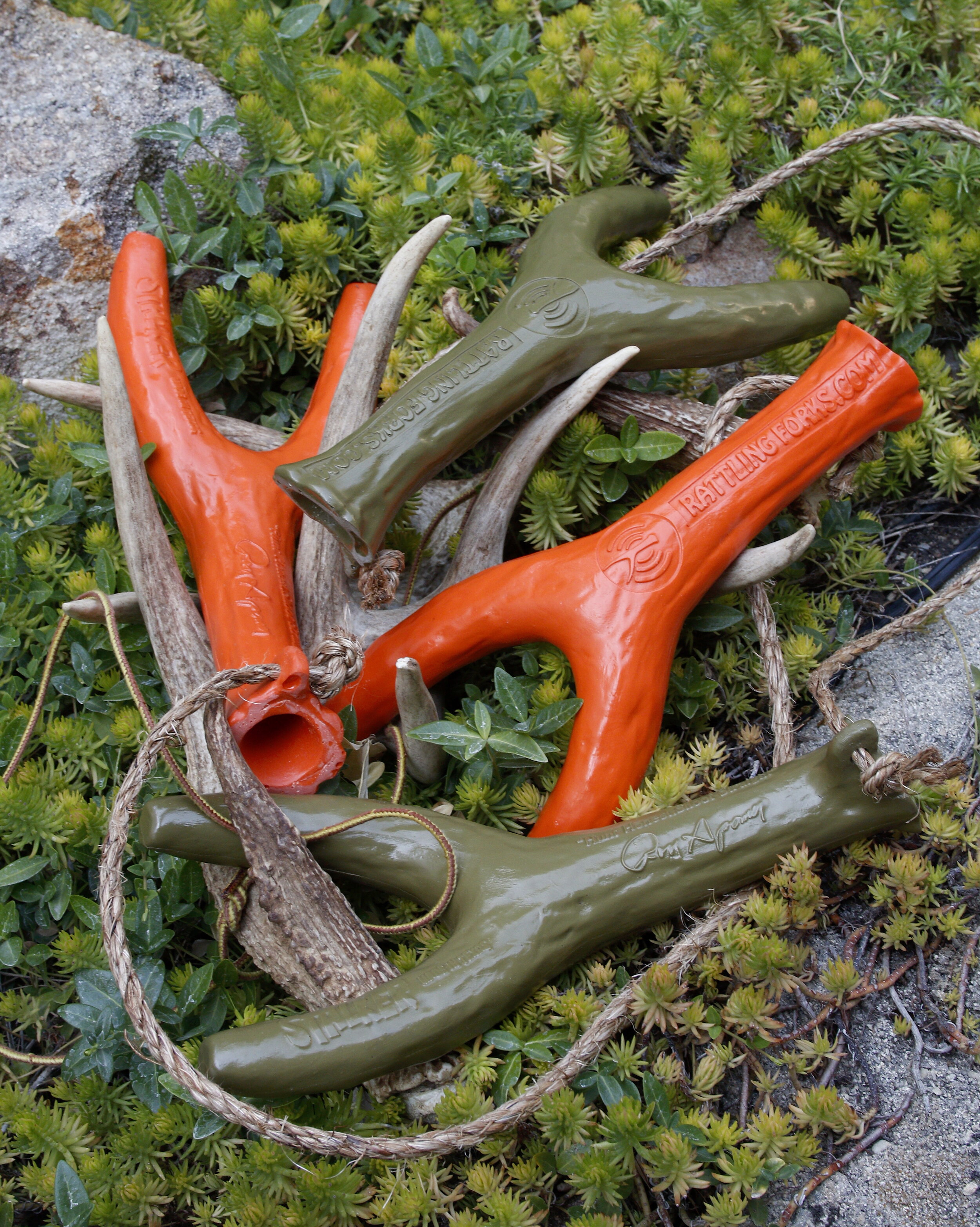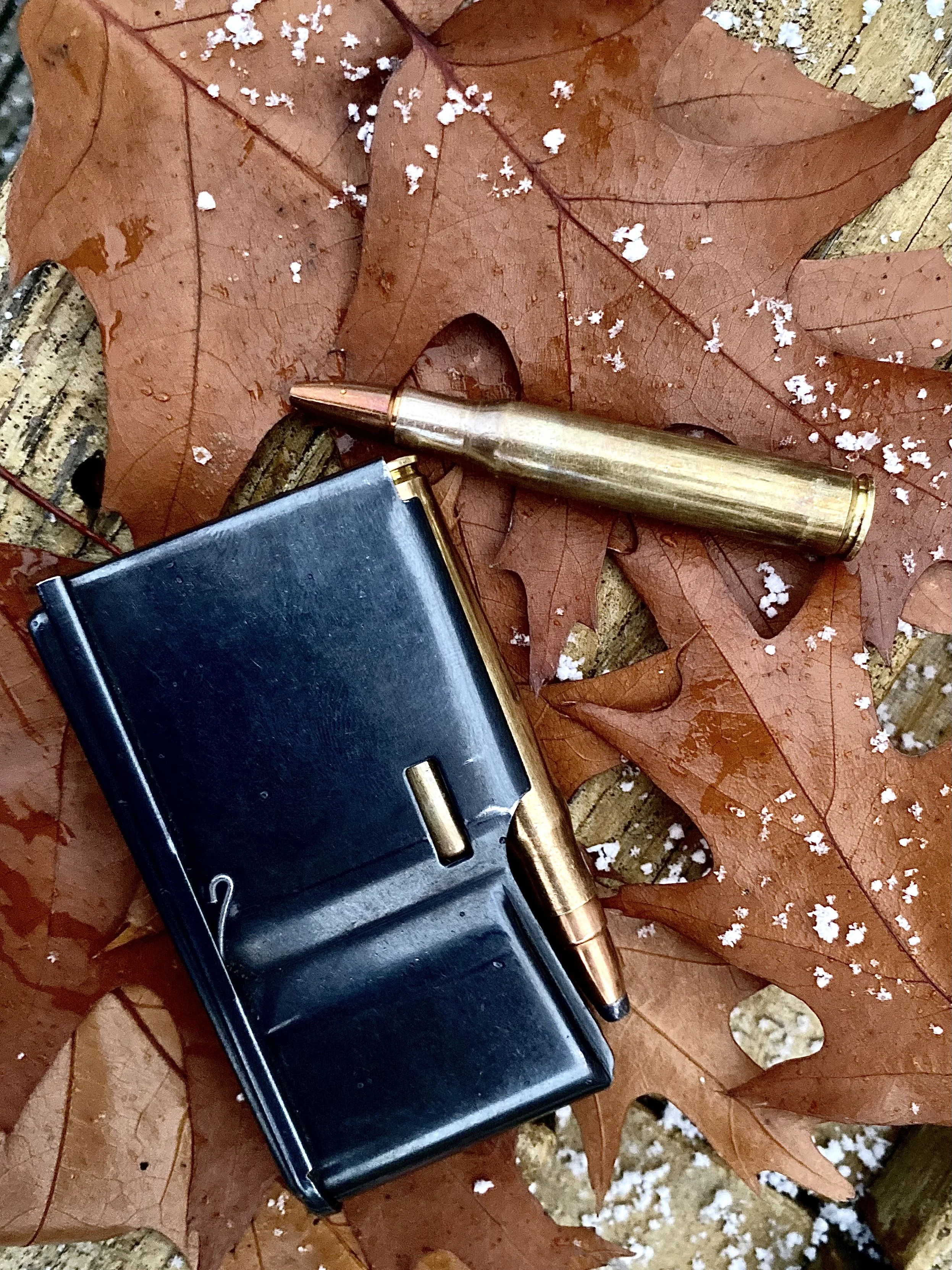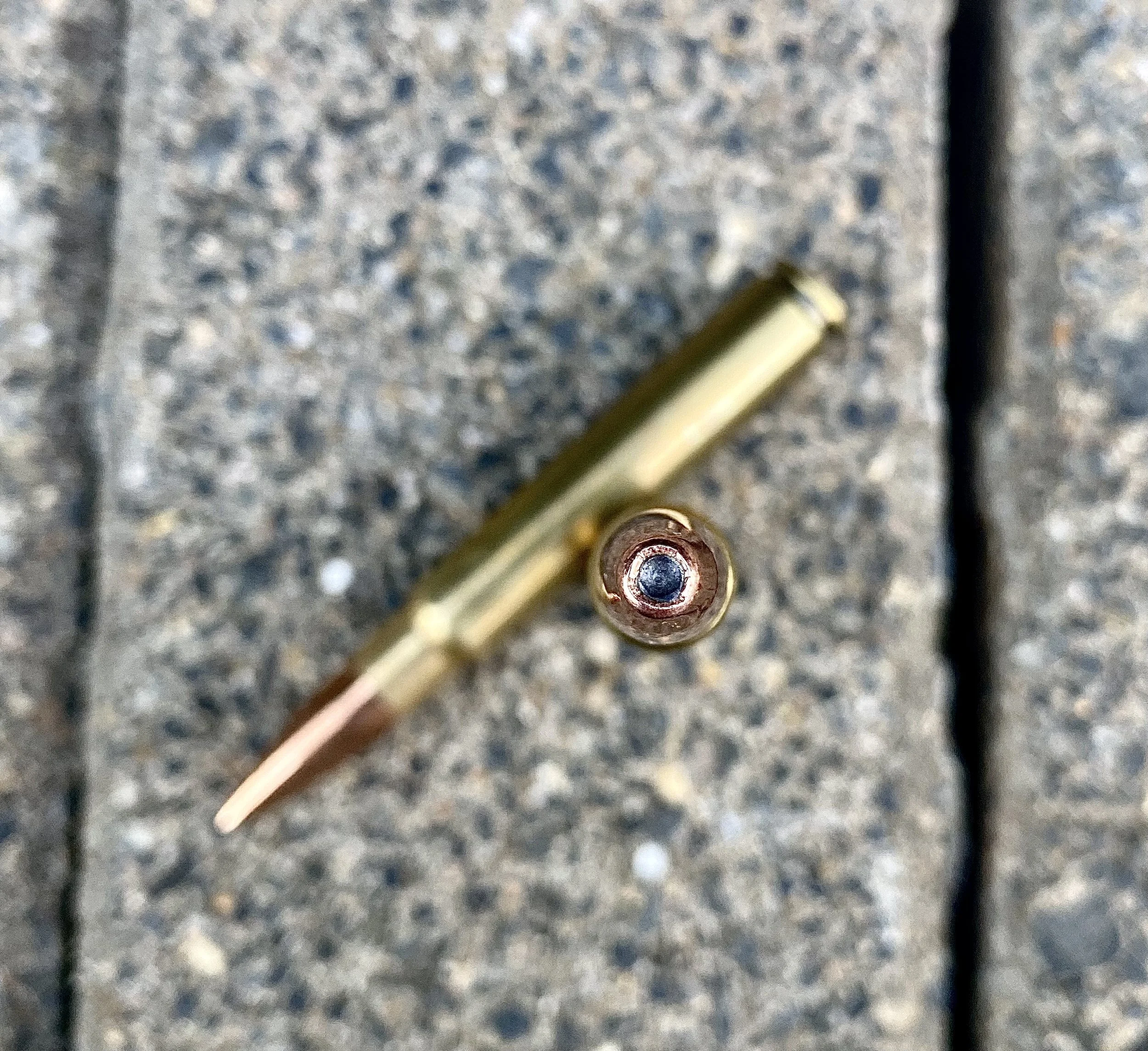Rattling Forks Brings Bucks Running
Whitetail Buck in Rut
Don’t get rattled!
If you mash a set of Rattling Forks and a big buck runs right into your lap, maintain your composure. That’s what’s supposed to happen.
Last fall I crouched beside a fallen oak log in Nebraska to demonstrate rattling action for an episode of Winchester World of Whitetail on Outdoor Channel. We’d rattled in three bucks at this location two days earlier, but the cameraman wanted to fine tune some b-roll close ups, so I went through the process again. I guess the whitetails didn’t know we weren’t serious because a splendid 5x5 ran to within 15 yards of me.
The rut-befuddled buck was so eager to see the fight that he didn’t even notice the videographer standing in the open. I was able to turn around and raise my rifle before the buck prance off. As soon as I clashed my Rattling Forks again, he stopped, still within reasonable bow range. Hamming for the camera, I rattled some more, and that lured a second buck over the hill. So there stood a couple of prime 3-year-old bucks, a 140-class 5x5 and an eye-popping 4x4 with towering tines, one right behind the other, both inside of 70 yards and me with a rifle and an unfilled tag I wasn't willing to spend until I rattled in a bigger buck. And I eventually would.
Tall 4x4 Whitetail Buck
We were hunting an ordinary cattle ranch. No high fences, no feeders, no genetic manipulation. These were wild deer, pursued annually by archers and riflemen. They came to the rattling so aggressively because of their own biology coupled with a healthy buck-doe ratio and a strong population of mature bucks. This increases competition and response to rattling and calling. I’ve seen it work from central Canada to the Mexico border, but never quite so well as last fall at Laughing Water Ranch with my bright, orange Rattling Forks.
What the Rattling Forks contributed to our success was volume and convenience. Real whitetail antlers would have worked, and I’ve used them for decades, but they aren’t nearly as compact, packable and convenient as a pair of Rattling Forks. With just two tines per side, Rattling Forks fit easily into my ALPS pack without poking holes in it, drape comfortably over my shoulder without poking holes in me, and still manage to put out more volume than any real antlers I’ve ever used. It’s difficult to find real whitetail antlers with the mass of Rattling Forks, and if I ever did, I think I’d hang them in a place of honor, not risk breaking them in a rattling frenzy.
Compared to real antlers, Rattling Forks Stalkers are more compact, easier to carry, safer to carry and safer to flash in the woods where other hunters might see them.
Big rattling volume probably isn’t mandatory — whitetails have incredible hearing — but on windy days and when reaching across the big country I hunt in the West and Plains States, it seems to make a difference. The day after I rattled in the two bucks above, Wade Hollenbeck and I rattled a 130-class 3-year-old 600 yards across an open hay field. Simultaneously, a 140-class 5x5 came in off a wooded hill about 300 yards to our left. The pair met right in front of us, close.
My patience paid dividends on the fifth afternoon of the hunt. At last light the previous evening I’d seen, feeding under a center pivot, a tall, wide 5x5 that looked like one Wade had captured on camera the previous week. It was nearly 400 yards away, so I didn't risk a shot. Another hunter had glimpsed what he described as the same buck in the area two days before. To hunt this spot, I set up the next afternoon on the fringe of a tiny, grassy creek curling through the alfalfa field about 170 yards from where the buck had been feeding. I began rattling about 2 hours before dark.
Irrigation Pipes & Whitetail Buck
With breeding activity well underway, many bucks were occupied and less than eager to respond, but after about a half hour of on-and-off rattling, I spied a hopeful young 4x4 loping in. That’s classic. The area’s big boy was probably camped with a doe, leaving the youngsters to troll. After this one moved on, I indulged two more rattle sequences and was beginning to doubt my chances when Mr. Wonderful stepped to the edge of the woods and stared right at me, just 200 yards away.
I laid the Rattling Forks in the grass, leveled my Model 70 30-06 and tried to not fixate on the antlers looming at 6X in my Leupold VX-3. I had to wait, don’t forget, for the videographer to give me the go ahead. This is the downside of filming deer hunting for TV. The actual hunting has to take a back seat to the filming! (And you thought it was all sunshine and lollipops.) But cameraman George Desort and I had practiced this routine many times. I trusted him to do his part, and when he whispered he was ready, I launched a 150-grain bullet across 200 yards of moist, frigid Nebraska air and into the neck of the biggest whitetail I’ve ever rattled in. We green scored his rack at 179 inches, gross.
Had these rattling adventures been my only success last year I’d have been tickled with the Rattling Forks, but over the next few weeks I employed them to suck in four 130- to 140-class bucks in another part of Nebraska, two in Kansas and six in Texas. I was then so impressed that I talked Rattling Forks' creator, Steven Ray, into building me a customized, lighter and more compact pair. He called them the Stalker, put my signature on them and has made them a regular order item. Pretty cool.
I can't guarantee you'll rattle in a bunch of bucks if you use a Rattling Forks Stalker, but I'll sell you one and let you try. I'd be disappointed and surprised if you didn't succeed.
I was so excited after rattling up this 170-class buck that I forgot to include the Rattling Forks in the picture.
Rattling Forks Stalkers are tough, compact, easy to pack and loud.
# # #



















